Manjanggul Lava Tube [National Geopark] (만장굴 (제주도 국가지질공원))
5.0 Km 237725 2024-05-17
182, Manjanggul-gil, Jeju-si, Jeju-do
+82-64-710-3945
Manjanggul Lava Tube, located in Gimnyeong-ri, Jeju, is part of the Geomunoreum Lava Tube system. The lava tube stretches roughly 7,400 meters, with a maximum x_height of 25 meters and x_width of 18 meters. These measurements make it one of the largest lava tubes in the world. Manjanggul holds great value for science and conservation studies, having well-maintained formations despite being formed over one hundred thousand years ago.
The majority of the cave is closed off, with only 1 kilometer being open to tourists. Within this open section, visitors can see a variety of lava tube and cave topographical features, including stalagtites, stalagmites, and stone pillars. Among these, the 7.6-meter-tall stone pillar at the end of the open section is recorded as the largest in the world.
Gimnyeong Seongsegi Beach (김녕성세기해변 (김녕해수욕장))
5.1 Km 31418 2023-01-17
237, Gujwahaean-ro, Jeju-si, Jeju-do
+82-64-740-6000
The clear waters that are highlighted with cobalt-blue and the clean white sand of Gimnyeong Seongsegi Beach steal the hearts of visitors every year. The beach is also popular with fishermen, who enjoy rope fishing from the rocks. This area is known to be good for catching striped beakfish and spotty belly greenlings. Not far from the beach is Manjanggul Cave, which offers a welcome escape from the daytime heat.
Haenyeo Museum (해녀박물관)
5.3 Km 60844 2024-03-12
26 Haenyeobangmulgwan-gil, Gujwa-eup, Jeju-si, Jeju-do
+82-64-782-9898
The culture of Jeju's female divers, known as haenyeo, which has been inscribed as a UNESCO Intangible Cultural Heritage of Humanity. It exhibits the history of Jeju's haenyeo culture dating back to ancient times, with all the exhibits donated by the haenyeo themselves. The museum even features a replica of a haenyeo's house and provides detailed exhibitions on their food culture, upbringing, semi-agricultural and semi-fishing culture, yeongdeunggut, and more.
Jeju Samdajang Gujwa Woljeong-ri Sehwa Bijarim (제주삼다장 구좌월정리세화비자림)
6.5 Km 1 2023-11-06
15, Bijasup-gil, Gujwa-eup, Jeju-si, Jeju-do
Jeju Samdajang uses their special “jang,” fermented paste sauce made with ingredients from Jeju, to deliver exquisite flavors and specializes in marinated crab, which is highly regarded among aficionados. In fact, the restaurant exclusively uses seafood and shellfish sourced from the seas of Jeju. Visitors who like marinated crab can opt for the Samdajang Set (spicy marinated crab, octopus, and seaweed soup, abalone rice porridge, etc.), whereas fish lovers would be served very well by the Galchijorim Set (braised cutlassfish, octopus and seaweed soup, abalone rice porridge, etc.). Because the dishes are all prepared with fresh seafood caught from the seas of Jeju, they all boast rich flavors. Note that this restaurant offers delivery services, so customers can get their famous marinated blue crab, soy sauce-marinated abalone, and soy sauce-marinated shrimp delivered to addresses in Korea.
Byeolbangjin Fortress (별방진)
6.7 Km 5080 2024-03-06
Hado-ri, Gujwa-eup, Jeju-si, Jeju-do
+82-64-710-3314
Byeolbangjin Fortress was designated as a Jeju Monument on April 3, 1973. The fortress is about 950 meters in circumference. The oval fortress was built in consideration of the location's topography having a higher terrain in the southern part and a lower terrain in the northern part. Of all the fortresses in Jeju, Byeolbangjin Fortress is in relatively good shape. The fortress is also an important example of how fortresses in Jeju were built and in what scale.
Maze Land (메이즈랜드)
7.3 Km 50877 2021-12-21
2134-47, Bijarim-ro, Jeju-si, Jeju-do
+82-64-784-3838
Maze Land is a themed park boasting the world’s longest stone maze, measuring roughly 5.3 km in total length. The maze is made mainly using stone and wood found on Jeju and is created to reflect the Jeju's three principle items or "Samda," which describes the things abundant on Jeju Island: rocks, wind, and women. The maze not only offers a fun activity for you and your friends, but also provides health benefits as the stones emit high levels of far-infrared radiation and the woods (T. occidentalis) produce a large volume of phytoncides. The park, with its variety of trees several decades old, is the perfect place for "forest bathing,” in which people surround themselves with nature (particularly trees) to soak in the natural benefits.
In addition to the mazes made of trees and stones, visitors are encouraged to check out the maze museum detailing the history of mazes starting from their origin in the 14th century. During the museum tour, visitors may also participate in hands-on activities such as puzzles and games.
Bijarim Forest (비자림)
7.5 Km 38829 2023-11-06
55, Bijasup-gil, Jeju-si, Jeju-do
+82-64-710-7912
Designated and protected as a Natural Monument, Bijarim Forest is home to 2,800 bija trees, ranging from 500 to 800 years in age, spread over 448,165㎡ land area. These majestic trees range from 7-14 meters in x_height, 50-110 centimeters in diameter, and 10-15 meters in crown x_width, so this forest is quite a rare example of its kind in the world. The berries of bija trees were used widely as a medicine used to kill parasites, while the wood was used to make premium furniture and go boards. Forest bathing in a bija forest helps to combat arteriosclerosis, mitigate physical and psychological fatigue, and restore the body’s rhythm.
Darangswi Oreum (Wollangbong Peak) (다랑쉬오름(월랑봉))
8.6 Km 15307 2020-05-06
San 6, Sehwa-ri, Jeju-si, Jeju-do
+82-64-740-6000
Located the Northeastern part of Jeju Island, Darangswi Oreum is a parasitic volcano that stands about 380 meters above sea level. From Darangswi Oreum, visitors can overlook tourist attractions such as Seongsan Ilchulbong (Sunrise Peak), Udo Island, Hallasan Mountain, coastlines, and various parasitic cones.
The mountain has an oval shape from south to north with a steep incline. The top has a large, deep funnel-shaped crater that still preserves its original shape unlike craters in cones. The name Darangswi is derived from the fact that the mountain looks like a moon ('Da' meaning 'Moon' and 'Swi' meaning 'Mountain' in the Jeju dialect).
Trees are scattered here and there at the top, and the outskirts of the mountain are decorated with cedar trees. Meadow plants such as Aster yomena populate most of the mountain. A gentle hill to the right of Darangswi Oreum is called Akkeun Darangswi Oreum (also called Sowol Nangak). Meaning 'small,' 'Akkeun' is both old Korean and Jeju dialect.
Darangswi Oreum hosts Wollang Peak Sunrise Festival every year allowing visitors to see the spectacular full moon from the crater. There are wooden stairs in place for easy ascent, and the mountain is also a popular site for paragliders.
Songdangnamu (송당나무)
8.9 Km 2912 2024-02-21
68-140 Songdang 5-gil, Gujwa-eup, Jeju-si, Jeju-do
Songdangnamu is a gardening café where visitors can enjoy flowers in a spacious garden. Songdang-ri, known for its abundant rainfall, is recognized as a neighborhood conducive to plant growth, making it popular for landscaping cultivation. The café features a greenhouse filled with various plants such as herbs, palm trees, and catcus, as well as an outdoor garden spanning over 5,300 square meters. The signature menu item is the hallabong ade.
Natural Habitat of Crinum Lilies on Tokkiseom Island (제주 토끼섬 문주란 자생지)
8.9 Km 24956 2022-09-08
Mujuran-ro, Jeju-si, Jeju-do
+82-64-740-6000
Jeju's Tokkiseom Island (Rabbit Island) is located 50 meters off the coast of Hado-ri, Gujwa-eup in Jeju-si. Crinum lilies grow in an environment where the average temperature is around 15℃ with the lowest temperature no less than -3.5℃. The flower is white and blooms from July to September. They bloom at night and have a strong fragrance.
![Manjanggul Lava Tube [National Geopark] (만장굴 (제주도 국가지질공원))](http://tong.visitkorea.or.kr/cms/resource/04/2658504_image2_1.jpeg)

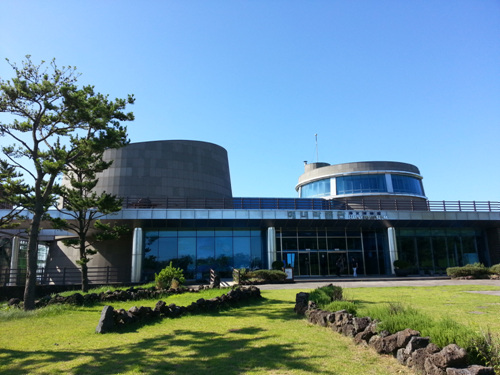
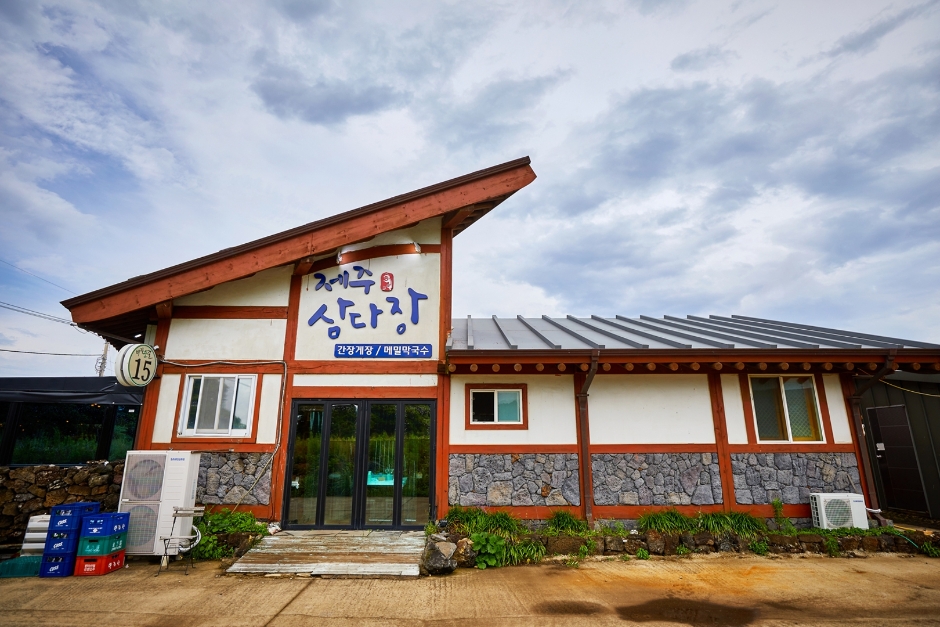
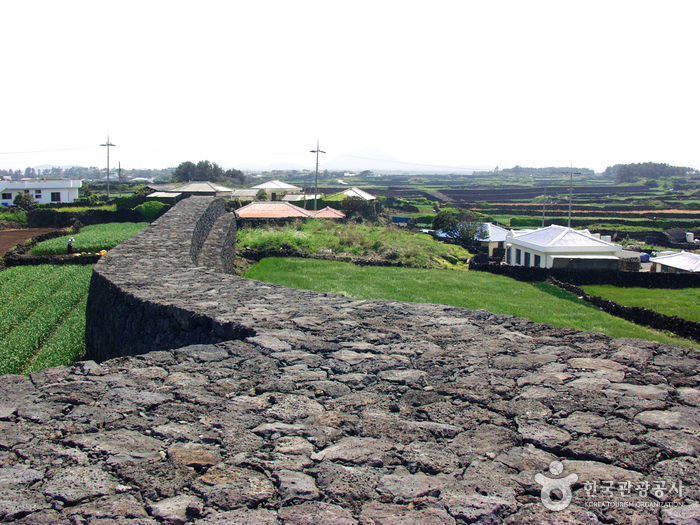
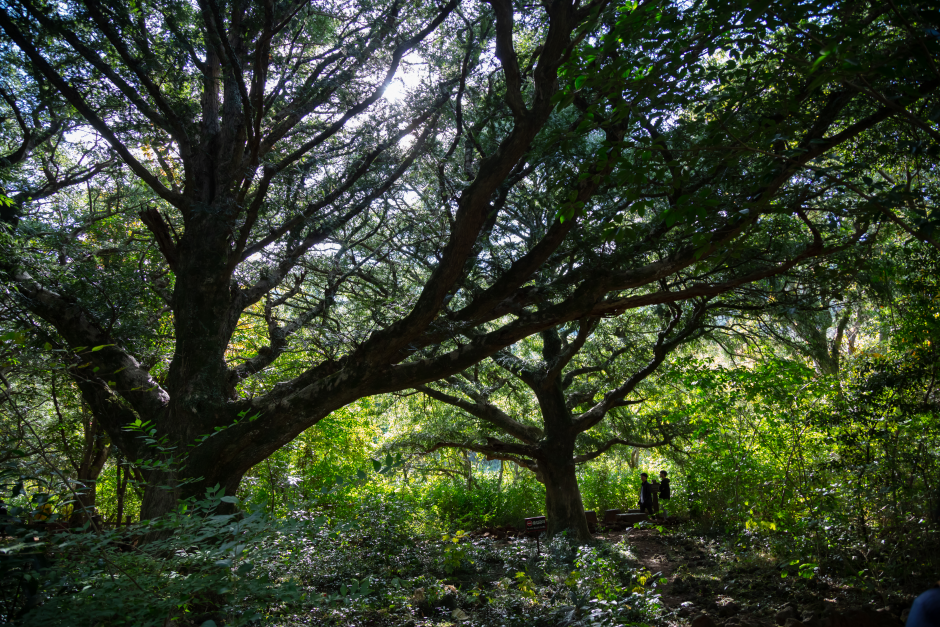
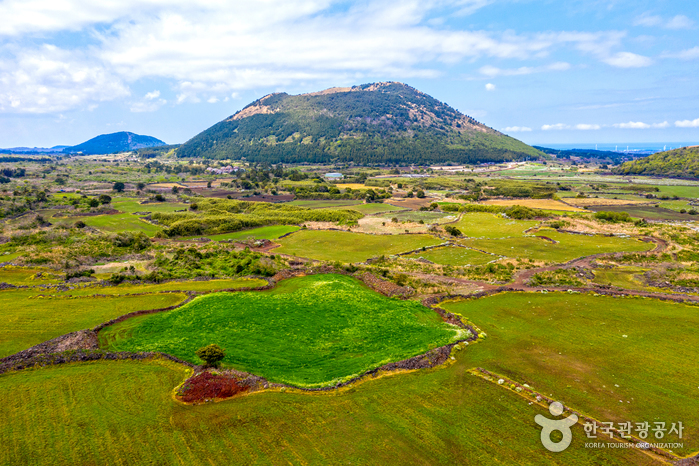
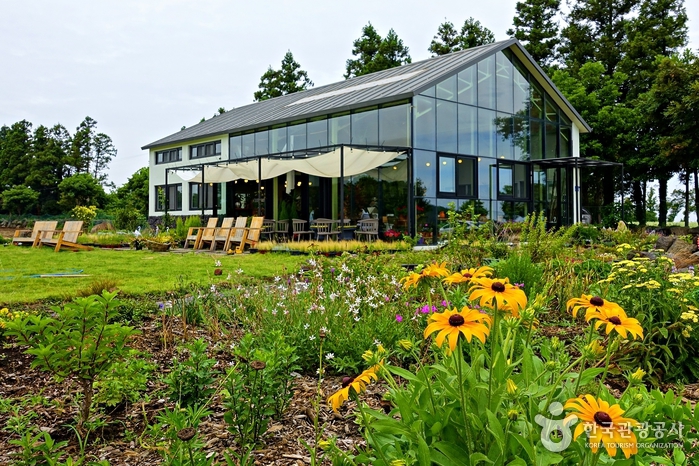
 English
English
 한국어
한국어 日本語
日本語 中文(简体)
中文(简体) Deutsch
Deutsch Français
Français Español
Español Русский
Русский